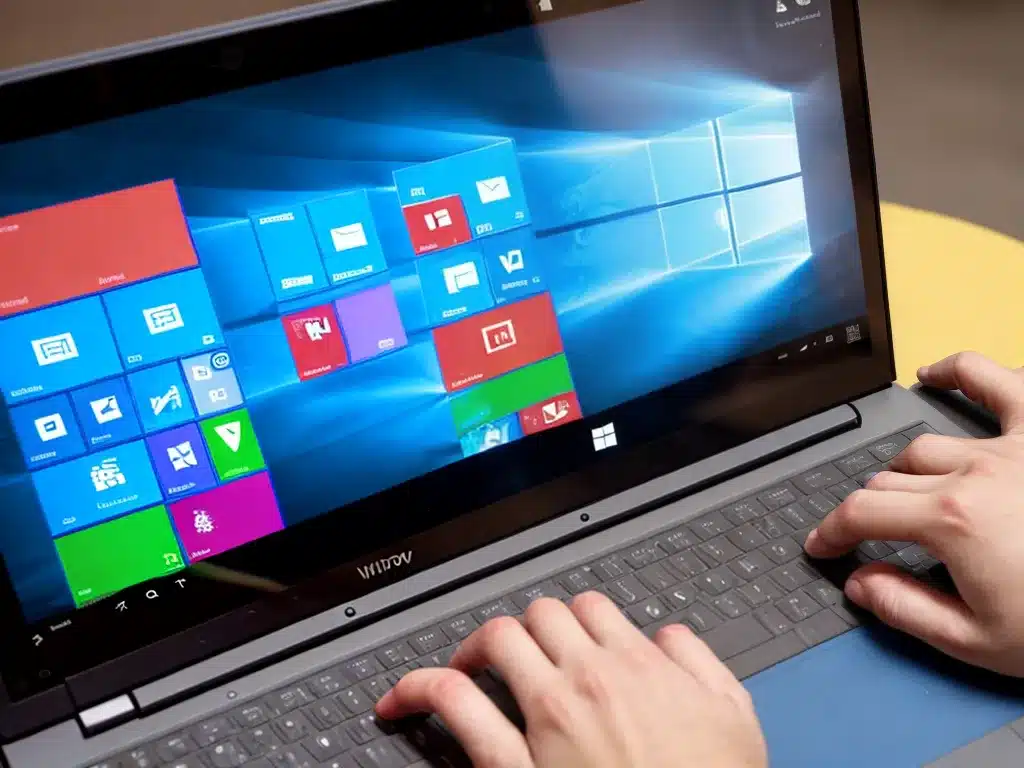
Introduction
As a Windows 10 user, I know how frustrating it can be when Windows updates don’t work properly. Updates are important for security and feature improvements, but sometimes they can cause more problems than they fix. In this comprehensive guide, I’ll walk through the most common Windows update issues and show you how to fix them.
Troubleshoot Update Installation Problems
Update Gets Stuck at a Certain Percentage
This is one of the most common Windows update errors. The update will start downloading but get stuck around 30-90%.
Potential solutions:
- Restart your PC and try installing the update again. This can resolve temporary installation errors.
- Temporarily disable your antivirus software. Some antivirus programs can interfere with updates.
- Unplug unnecessary USB devices. Devices drawing too much power can cause update problems.
- Check for and install any pending Windows updates. Having multiple updates queued can create issues.
- Run the Windows Update Troubleshooter. This automated tool checks for problems and applies fixes.
- Reset the Windows Update components. This resets any corrupted files or settings.
Update Fails to Install with Error Codes
You may see a specific error code like 0x80070002 when an update fails.
Potential solutions:
- Check for and install any pending updates first. Certain updates require others to be installed beforehand.
- Clear the Windows Update cache. Old files in the cache can get corrupted and cause errors.
- Perform a DISM scan to check for system file corruption. Run DISM commands to fix any issues found.
- Make sure your drivers and system BIOS are up to date. Incompatible drivers can prevent updates.
- Repair Windows system files with the System File Checker (SFC) tool. This scans and restores corrupted files.
Update Causes Blue Screen of Death (BSOD)
In rare cases, a Windows update can lead to the “blue screen of death” displaying during boot.
Potential solutions:
- Boot into Safe Mode and uninstall the problematic update. Search for “View Update History” to find it.
- If unable to boot, perform a Startup Repair from recovery options. This can fix issues with system files.
- Roll back to a System Restore Point before the bad update was installed.
- As a last resort, reset Windows which reinstalls Windows but keeps your personal files.
Fix Windows Update Connection Issues
If your PC can’t connect to the Windows Update servers, you’ll be unable to check for or download updates.
Potential solutions:
- Check your internet connection and restart your router/modem if needed.
- Make sure the Windows Update service is running in Services. Start it if stopped.
- Flush and reset the DNS resolver cache by entering
ipconfig /flushdns. - Change the DNS servers to Google DNS or OpenDNS. This resolves any issues with your ISP’s DNS.
- Diagnose connectivity with the Network Troubleshooting Tool. It can fix common network errors.
- Reset Windows Firewall to default settings in case it’s blocking connectivity.
- Adjust the proxy server settings if your network uses a proxy. Make sure it’s properly configured.
Troubleshoot High CPU Usage During Updates
Some updates can cause abnormally high CPU usage as they install in the background. This slows down your PC.
Potential solutions:
- Open Task Manager and monitor which process is using the CPU. End the task if it’s the Windows Update service.
- Adjust the Windows Update active hours to avoid installations during usage hours.
- Set the update service to run at a lower priority so it doesn’t hog CPU.
- Check for and install updates for your device drivers, especially graphics drivers.
- Disable visual effects like transparency to reduce GPU usage during updates.
- Consider upgrading your CPU if it’s consistently pinned at 100% during updates.
Fix Windows Update Deleting Files
In rare instances, a Windows update can delete personal files and folders on your system drive.
Potential solutions:
- Restore your files from File History or another backup if available. Always maintain backups!
- Use Shadow Explorer to restore older versions of files that may have been deleted.
- Download a file recovery app to scan your drive and recover deleted items.
- Check if the files may have been quarantined by your antivirus and can be restored.
- Open an elevated Command Prompt and run
CHKDSK /fto check your drive for errors.
Conclusion
With the right troubleshooting techniques, you can resolve most Windows update errors on your own without needing to reinstall Windows. The key is to isolate the cause of the problem based on the specific error or behavior you’re seeing. Using automated tools like the Update Troubleshooter along with manual fixes can get your updates successfully installing again.












